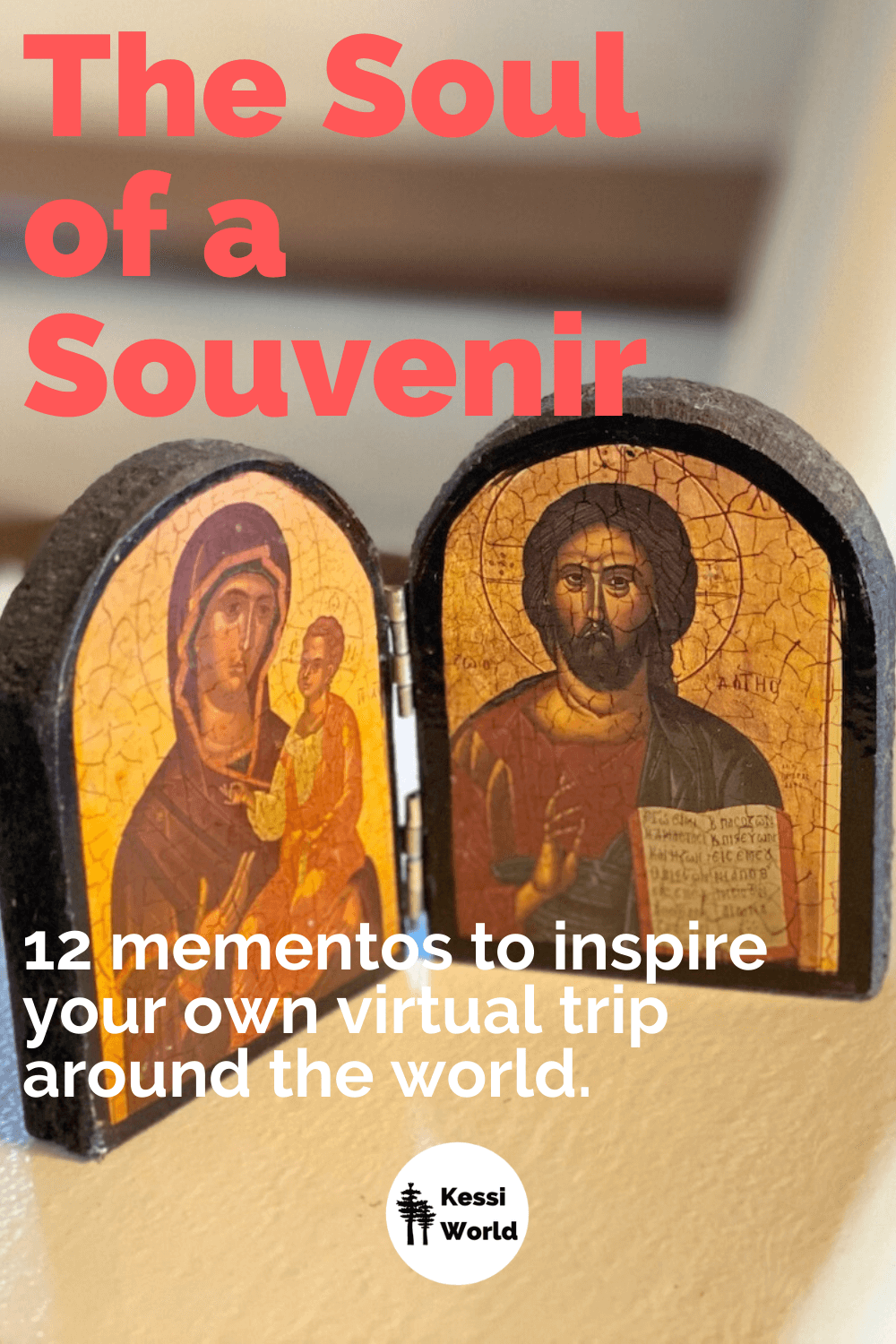
Nowadays, confined to my home in Seattle, there isn’t much travel in my life — at least in the same vein as pre-corona times. Wings feel clipped but movement is still my friend and I can hop along with the bunnies late at night. Nature is coming alive in spring with flowers and new buds in every direction, so there is still optimism and light in the air.
The other night I felt serious pangs of the travel blues and just as I was teetering on a pity party for one, the shadows of my bedside light graced across a shelf underneath my window — the playground for a variety of small mementos. These items range from a piece of painted driftwood recovered on a beach in Donegal, Ireland (pictured above) to a religious diptych purchased atop the monastery cliffs of Meteora in Greece way back in 1993 (pictured at the bottom).
It occurred to me that these small trinkets were acquired all over the world for moments like this. Times of literal and figurative stillness. Partly to jump back in time to the sights, sounds and smells of each experience — also to reiterate the gratitude for the life that offered such varied travels.
These souvenirs hold tremendous amounts of energy that, with a beat of the heart and blink of an eye, take me right back to a place like the Tibetan monastery high in the Himalayas where students not yet aware of digital cameras sold me hand scripted prayer wheels (pictured at the bottom) to raise money for their school.
And then, there is the tiny wood-carved zebra (photo and story follows below) central to my barter experience at the border between Kenya and Tanzania. I can still smell the mixture of sweat, dust and diesel exhaust as we jumped off the tired mini-bus in order to work through customs & immigration. A Masai woman saw me using a pen to complete my paperwork and engaged me to trade the Bic for an item she was selling. We eventually arrived at a suitable exchange and now the carved animal greets me every morning when I wake up.
Postcards to koala bears
I had the fortune to grow up with active grandmothers in my life — both traveled to varying degrees in their retirement years. Each brought travel and the concept of souvenir to life in special ways still with me today.
Washington grandmother sent postcards saved from past trips. They were usually thirty years old, harkening back to days when Beruit was still “the Paris of the Mediterranean” and propellor planes flew from Shannon to New York. These souvenirs of sorts had special meaning to me — in addition to the joy of receiving mail, my mind was encouraged to wander around the world to the far away, exotic places depicted in Technicolor.
Oregon grandmother usually surprised us with little gifts, and I remember in particular a set of stuffed Koala bears she brought back from Australia — one for each of us three youngest boys in the family. I kept the bear for many years and the sight of him always helped me travel to sweet memories of her.
To me, souvenirs and post cards were more than cheesy obligatory gestures. They included me in a world of full of curiosity and wonder without having to leave my small Oregon town. Much like modern day April, 2020.
Wanderlust in the age of social distancing
Besides looking pretty in a curio cabinet or stuck to the fridge with a magnet (or being the magnet itself) these tchotchkes serve to combine memories with figurative travels today — just as most of us are presently not able to hit the Grand Bazaar in Istanbul or dip our feet into Loch Ness.
I’m drawn to religious icons and my favorite souvenirs are usually small and lightweight. Greatest hits, like the 12 featured below, were usually made locally and bring to life wonderful stories — mostly associated with special connections to people and places along the way.
And just like that, from the comfort of home, a trip around the world is possible — we can all fly away!
Travel in spirit: my favorite mementos

Map of souvenir locations - countries
January 2019: Grindelwald, Switzerland
I loved my time in the Swiss Alps, and have a few stories about the experience including That time I tried to outsmart the Swiss and the associated photo gallery. While the resort town has every kind of product to offer a global audience, these carved wooden cows called my attention every time I passed by the beautifully curated shop. “The artist lives just up the hill,” remarked the shopkeeper woman, who scolded me for using a credit card to purchase postcard stamps (I was all out of Swiss francs). After some ‘inter-cultural’ back and forth, I was on my way. Unfortunately, the chocolate also procured as a souvenir didn’t make it home.
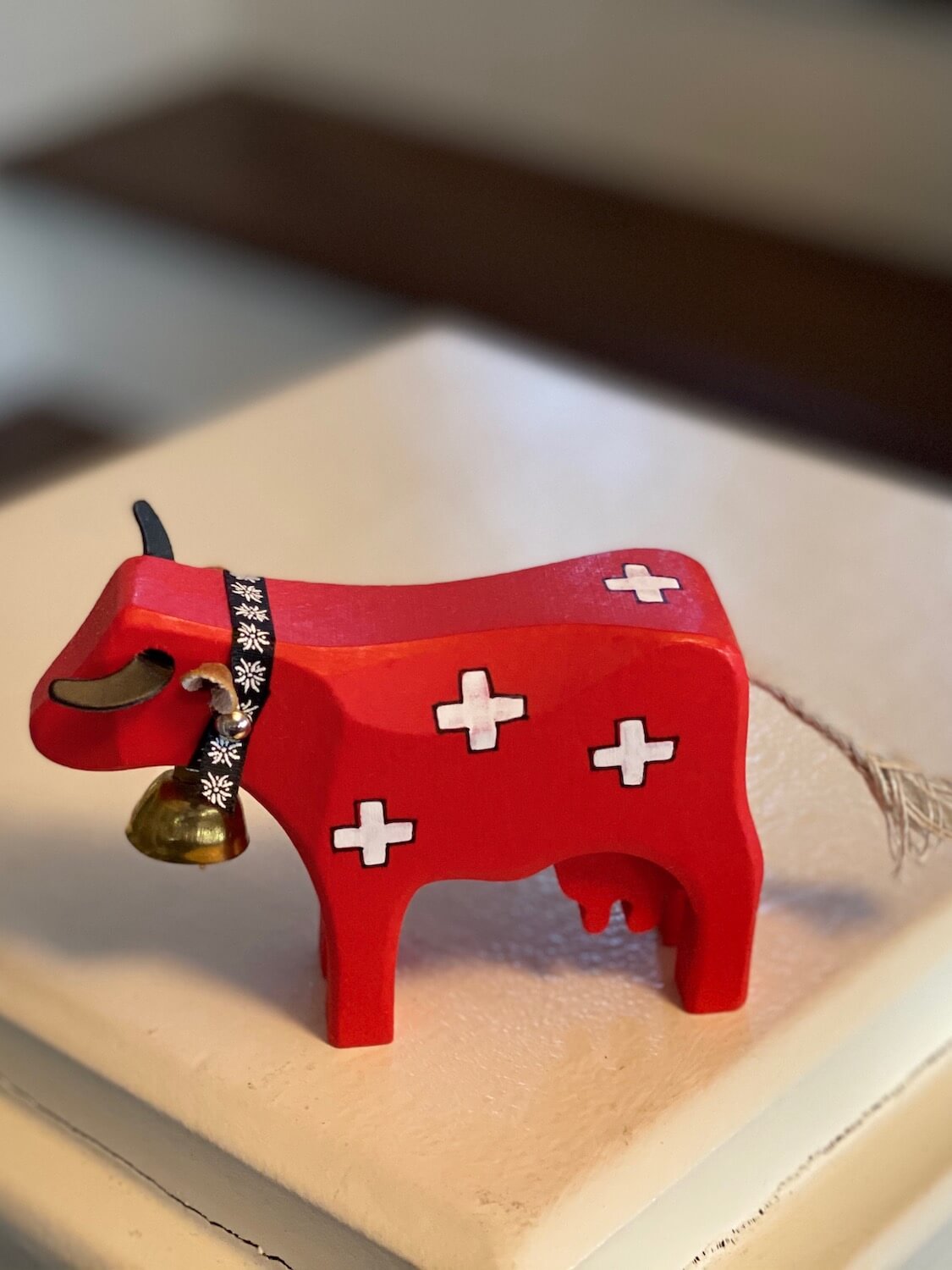
February 2019: Nuuk, Greenland
Greenland exceeded my expectations in every way and I was particularly fascinated with the Inuit culture — which actually came to Greenland after Vikings. Locals still learn the ancestral crafts and continue to use animal materials not legal to transport out of the Danish protectorate region — so it’s very important to verify. My friend Konstantin worked during business hours and I’d wander the snowy streets of Nuuk, dropping in daily on a travel agency that doubled as a gallery selling native arts and crafts. The staff were friendly and very knowledgeable about the local creations — bringing the works to life. This Inuit family is carved from Greenlandic sandstone and are represented wearing traditional parkas made from local fur.
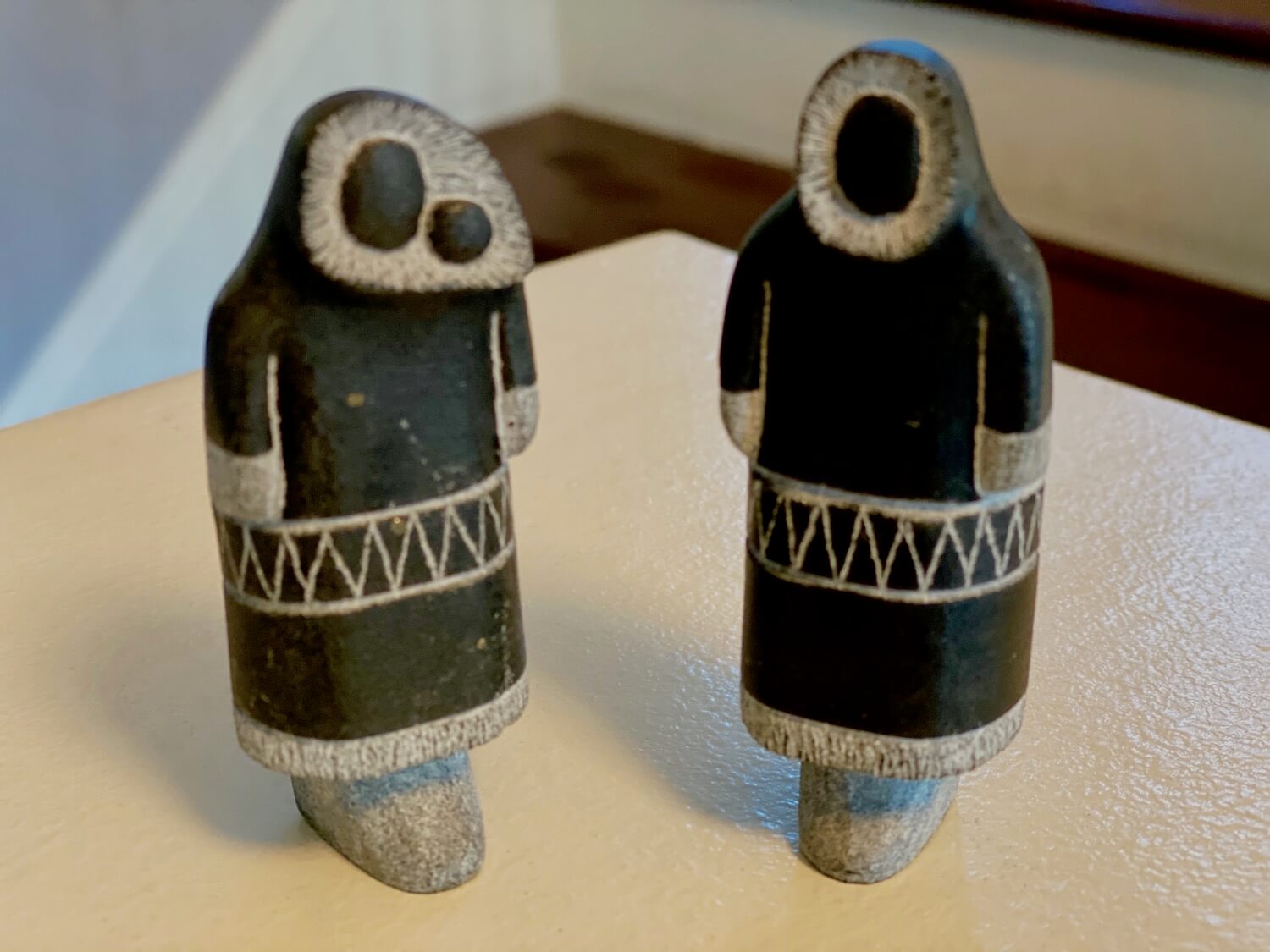
March 2016: Santiago, Cuba
The final resting place of Fidel Castro is on the farthest reaches of the east coast of the island of Cuba — a two hour flight from Havana and central to the rich afro-cuban culture. We traveled to nearby National Shrine Basilica of Our Lady of Charity of El Cobre, built in 1926 and situated in the village El Cobre. Cubans traditionally travel to this National Shrine to ask Mary to offer charity and healing to family members and it is customary to present yellow flowers and candles as an offering once inside the Basilica. As non-cubans, we attracted quite some attention buying flowers and candles at one of the many stalls on the road leading to the church. Several teenage boys eagerly tried to sell me a balsa wood tribute to Our Lady of Charity (Mary) but my hands were already full. When I finally started to wander toward the steps of the prominent holy structure one of them handed me this delicate icon, and I had her blessed by the priest in the church (for a modest fee).
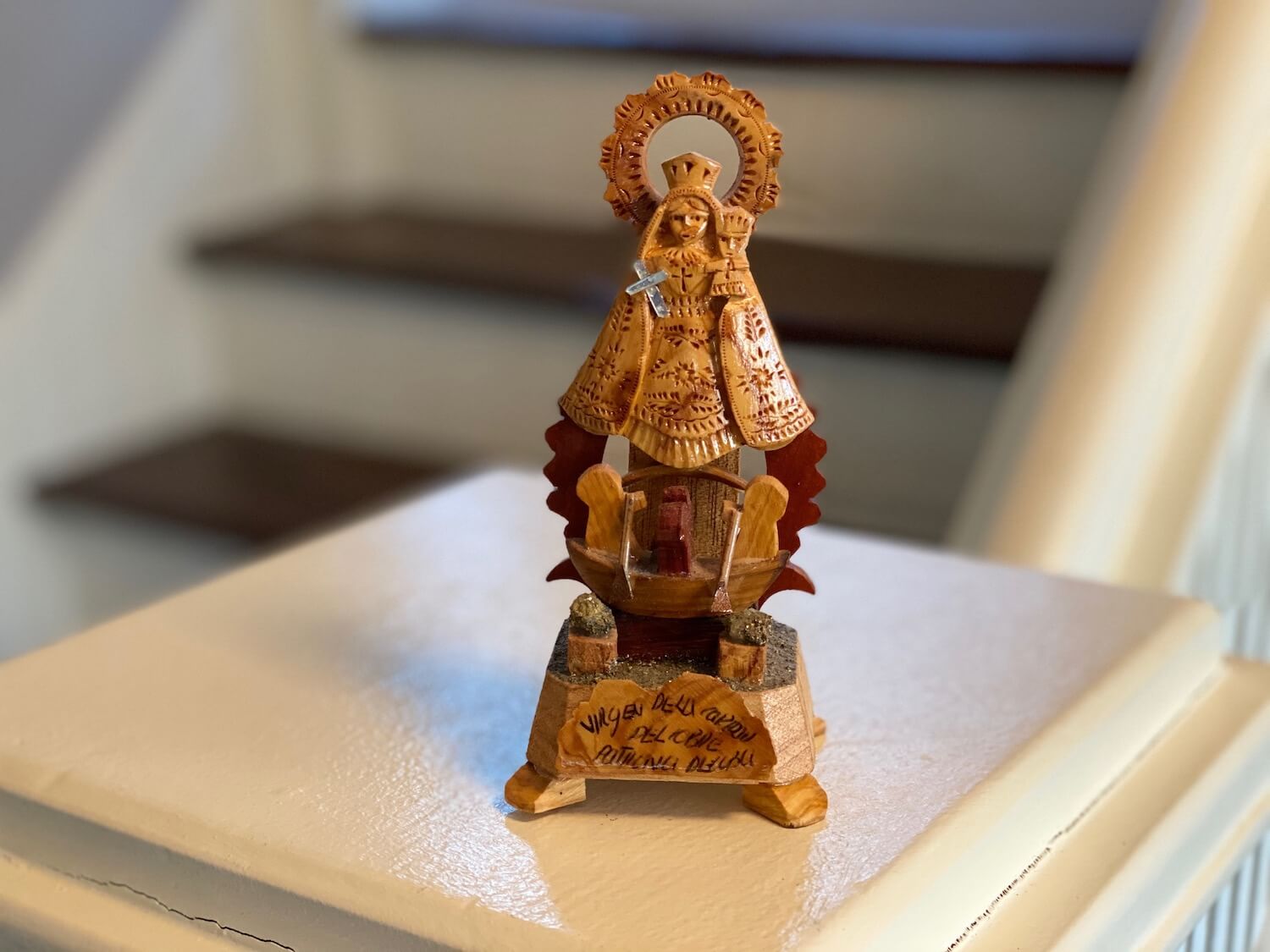
April 2000: Beijing, China
My first visit to China was in 2000 and my friend Shawn and I stumbled upon a shop selling a barrage of former communist trinkets, proletariat uniforms and Chairman Mao’s little red books. The maze of 19th century buildings was full of all the sounds, sights and smells of a China caught in the middle of a full transformation from agrarian collectives to a unique form of capitalism. Later, this entire area would be razed to make way for the 2008 Summer Olympics. This wind-up clock was one of millions mass produced in the 1950’s and given to citizens to “be ready” for the time to come to protect China. The vibrant red clock clicked away next to my bed for about a year before driving me crazy. Even then, the spring kept a loud “tick tock” working for months, and it ended up in the hall closet until time was up.
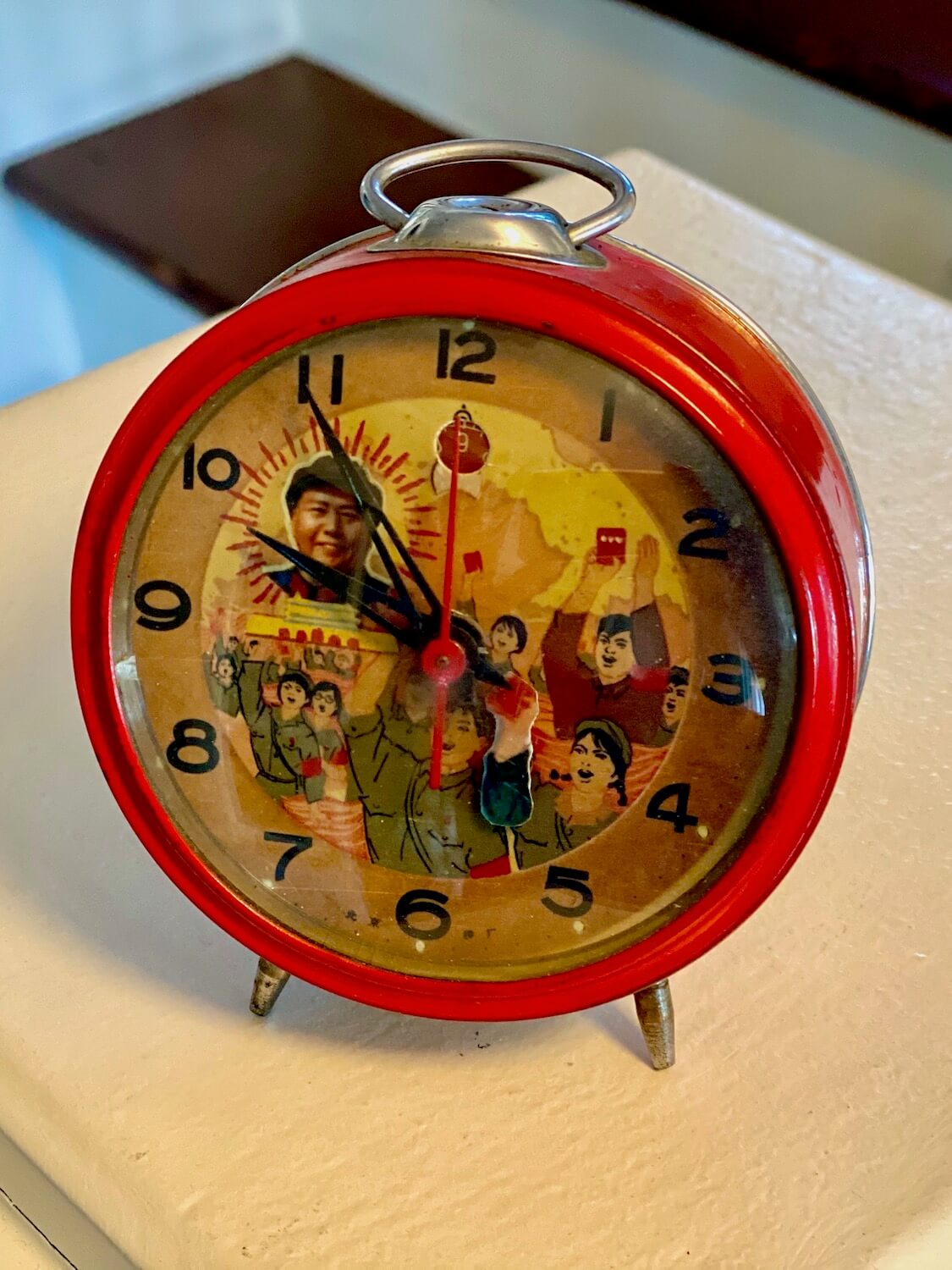
2013: Tunis, Tunisia
This photo highlights the silver crafted fish and also captures a second, larger item also purchased in Northern Africa. The rug out of focus in the background was hand crafted in the 1950’s and the shop keeper professionally wrapped it for me to take as a carry-on in flight. I visited Tunisia a few years after the Arab Spring hit Egypt and spread to a few other countries. Tunisia was a late bloomer and the government experienced a coup and ensuing violence the day I arrived. There were protests in the streets, so we ventured to Dougga which is about an hour drive away from the city limits. The ancient Roman ruins are fantastically preserved, still holding original mosaics on floors of 2000 year old bathhouses — just as the goats wander, free-range, through it all. On the outskirts of town we stopped at a shop and this silver craft caught my eye. Being a pisces and all it seemed like a fish was a good Oman — especially in this time of crisis. To this day he is on my kitchen window.

June 2009: Kenya/Tanzania border
I’m not sure which was worse, the intense dust or the choking diesel on the minibus carrying us from Nairobi, Kenya to Arusha, Tanzania. Either way, we had a reprieve halfway through the journey at the border between the two African countries. Passengers disembark the bus, fill out forms, and continue through immigration on foot while the vehicle drives through a separate check point. I pulled out a writing utensil to complete my form and noticed, out of the corner of my eye, a Masai woman — colorful flowing robe and tchotchkes in tow — approaching me. Though I declined her first few offers for goods she was persistent, motioning to my pen, which was an Alaska Airlines Visa card promotional Bic. I didn’t really have a burning desire to acquire beads or other textiles, but this little zebra beckoned me to make the trade. Soon enough she had a pen and I had a new pet — who hangs our with the other carved friends — only a few feet away from my head at night.

July 2019: Berlin, Germany
Germany’s capitol city is my favorite in Western Europe, and I’ve been a few times as mentioned in my post about honoring the important history of Berlin. The Trabant takes me back to my days as a study-abroad student in the early 1990’s — traveling through Germany and Eastern Europe with my friends. From Budapest to Berlin, we’d pile into these eastern block produced cars to get around. What better symbol of the history of this part of the world?
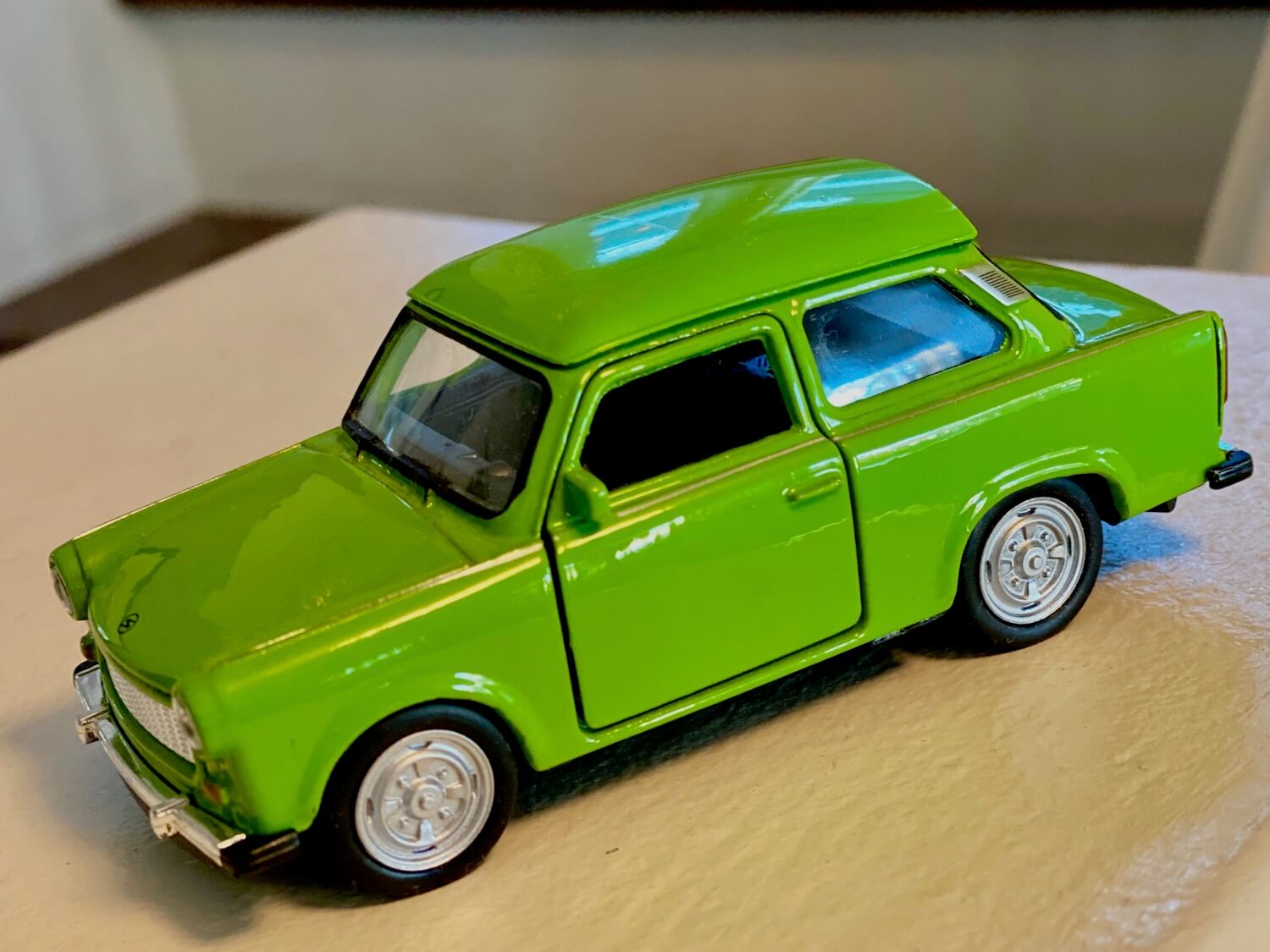
August 2019: Minsk, Belarus
Belarus definitely delivers on the feeling of peeling back layer after layer to get to the kernel of a center, and Minsk has heart and soul wrapped up by a government that prefers to control everything. Yet, I had a great opportunity to open up the dolls, so to speak, by enjoying a free walking tour that ended up delving rather deep into the soviet-industrial history, modern society, and edgy underground counter-culture flourishing under the surface of it all. The citizens are friendly, music loving people who seem kind to one another and appreciative of the simple things. These girls were picked up at an arts and crafts kiosk near the famous landmark, Komarovka Market. I was particularly drawn to the sharp greens of the painted enamel.
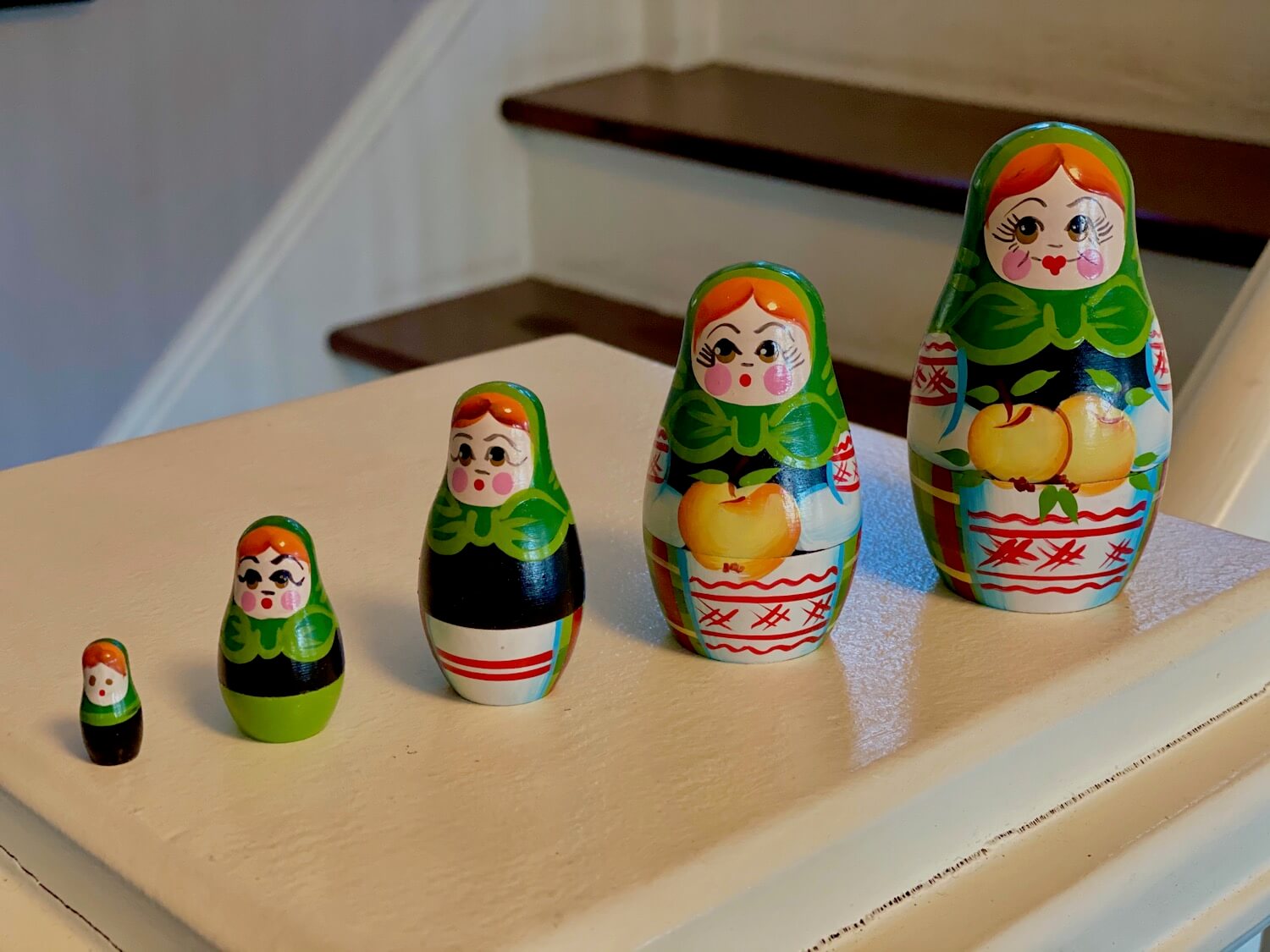
September 2006: Dharmsala, India
His persistence to get me to buy a carpet was as piercing as his green eyes and our conversation was jovial in a back and forth haggling normal to India. We were in this hilltop oasis to soak up the energy of the Dalai Lama — who was traveling outside India at this time. I’d just walked through a produce market where a full grown cow was wreaking havoc, eating the apples on the stand in a nonchalant manner. A carpet just didn’t make sense for me at this point of our month-long tour of India and I tried to let my new friend down easy. He was originally from Kashmir — the Indian side of the ever-changing political border — and spoke 5 languages. As it became time for me to push off to meet friends, he offered me a tiny gesture of friendship — this laquered elephant, crafted in his homeland of Kashmir.
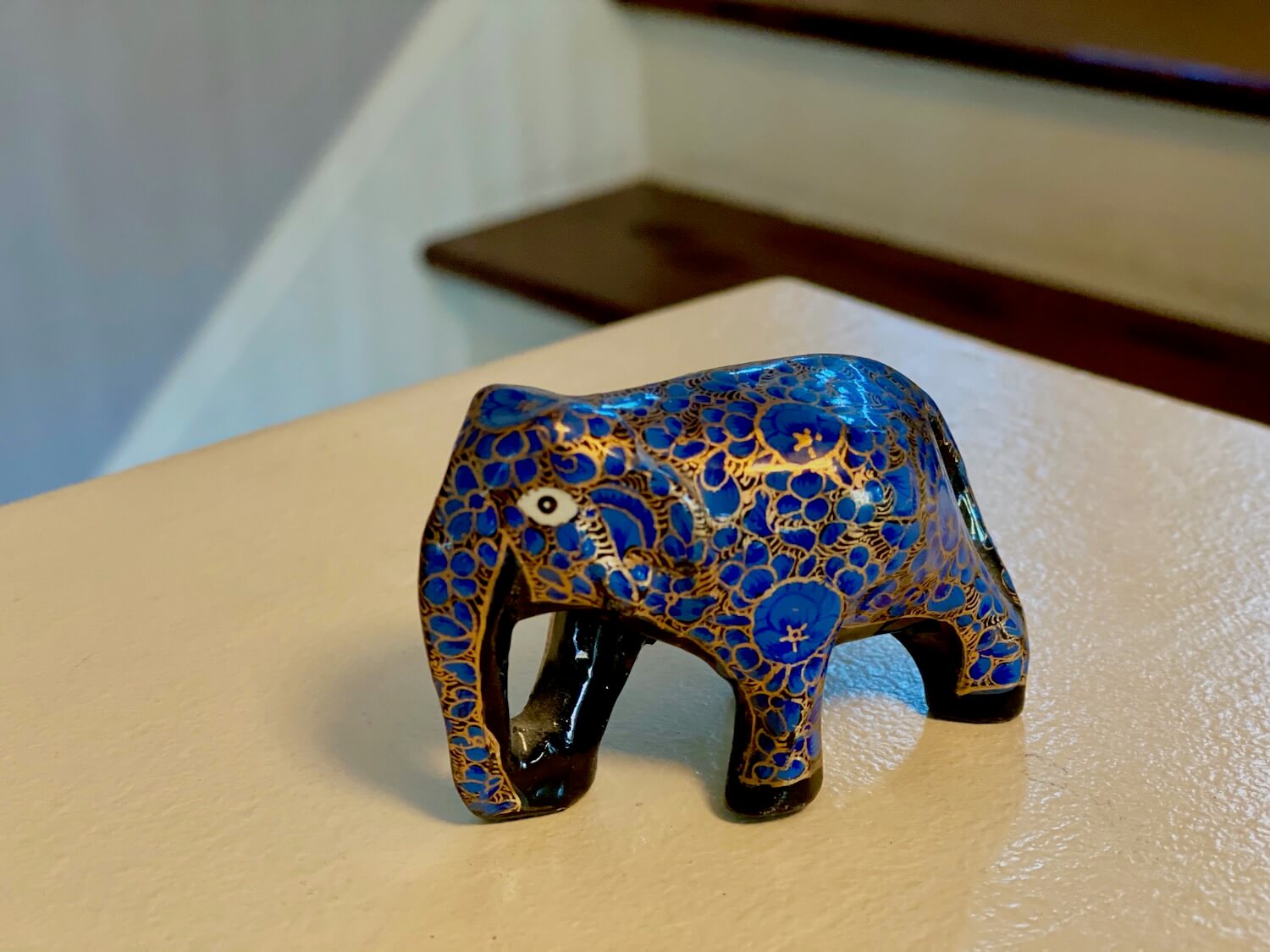
October 2019: Bo.Lan Restaurant, Bangkok, Thailand
Bo.Lan is an outstanding Michelin star restaurant for sure, but I also appreciate their earnest attempt to obtain a zero carbon footprint. The dark teakwood shutters filter out the beating sun and there isn’t blasting air conditioning. Chefs Duangporn Songvisava and Dylan Jones actively utilize small scale farms and work to support underprivileged areas. The meal was delightful, beginning with first tastes in the kitchen with the chef and then course after course of delicate tasty morsels ranging from spicy flavors to lighter hints of coconut curry — all with zingy craft cocktails and gracious staff embodying the beauty of Thai culture. The adjacent shop offers items produced by orphans in a nearby village, including this hard carved elephant. Just a glance at this tiny memento and I can taste the flavors and smell the lemongrass wind slowly working through the award winning restaurant.

2012: Kyoto, Japan
Japan takes pride in their landmarks and production of such souvenirs, so I was assured this bright gem was crafted in-country. Also, we were in Kyoto in the absolute height of a heat wave in August, which is when the mystical Bon Festival (or Japanese Day of the Dead) takes place. As such, I associate this miniature gate with November. The Fushimi Inari Shrine is quite something, as hundreds of these gates line the many paths leading to a variety of holy buddhist temples. Truth be told, I wanted a little A/C after wandering the hills in the heat and popped into a curio shop to get some ice cream. But the sharp colors grabbed my eye and soon this was in my suitcase bound for home via Tokyo, Fukuoka and Honolulu.
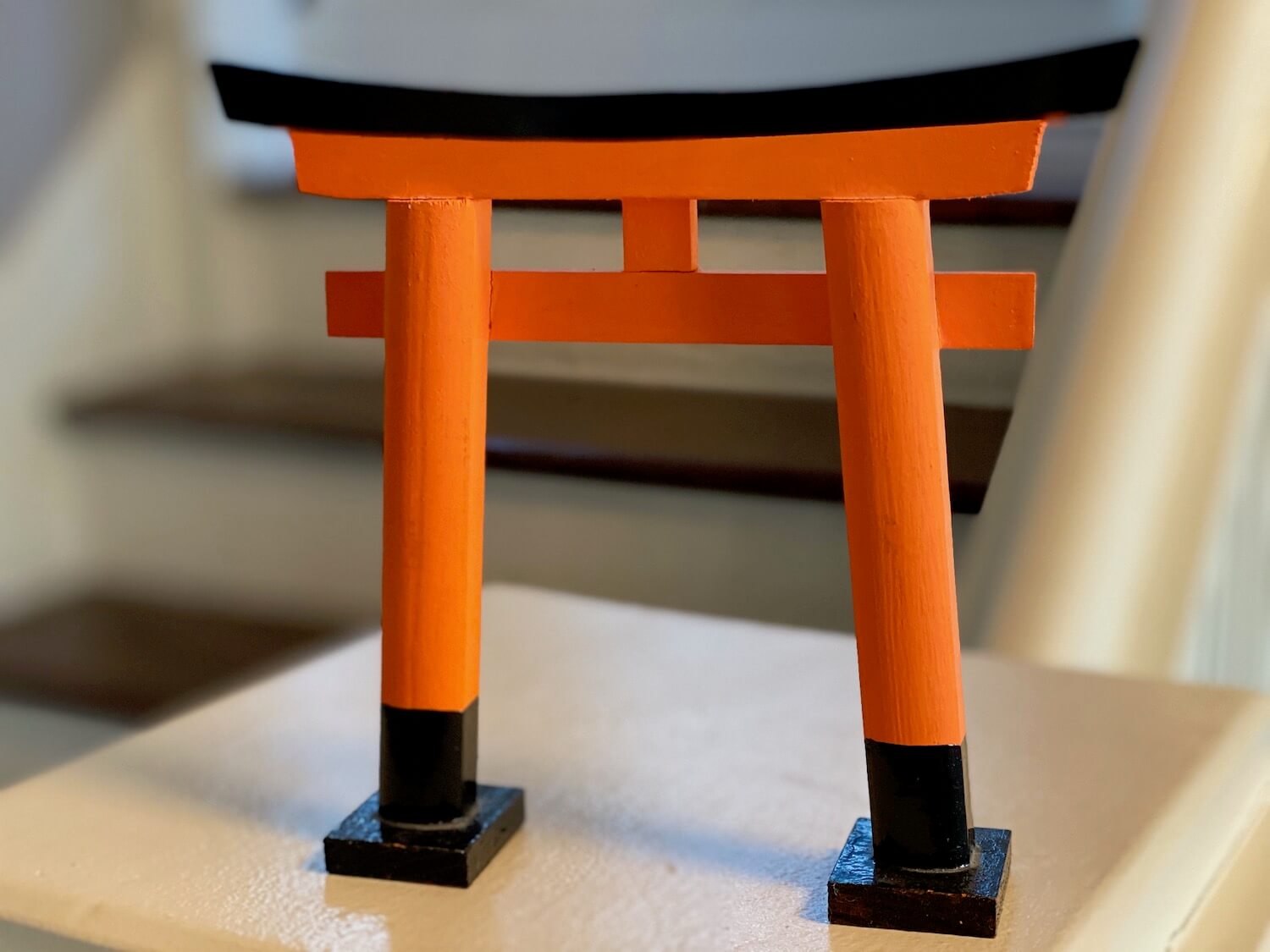
December 2018: Naples, Italy
Neopolitan presepi (nativity figures) have been created by hand for hundreds of years in the famous San Gregorio Armeno quarter of the city. I found myself wandering through the crowded narrow streets of shops specializing in these creations — works of art ranging from chickens in cages to Elvis — when all at once this bell in the window of a religious supply store grabbed my attention. I use bells for meditation so it seemed like the appropriate remembrance of my time in the little Christmas village of sorts. Now, every time I ring the bell to start a mediation I get hungry remembering the perfect mixture of basil, fresh local tomatoes and mozzarella that make up delicious Napoli pizza.
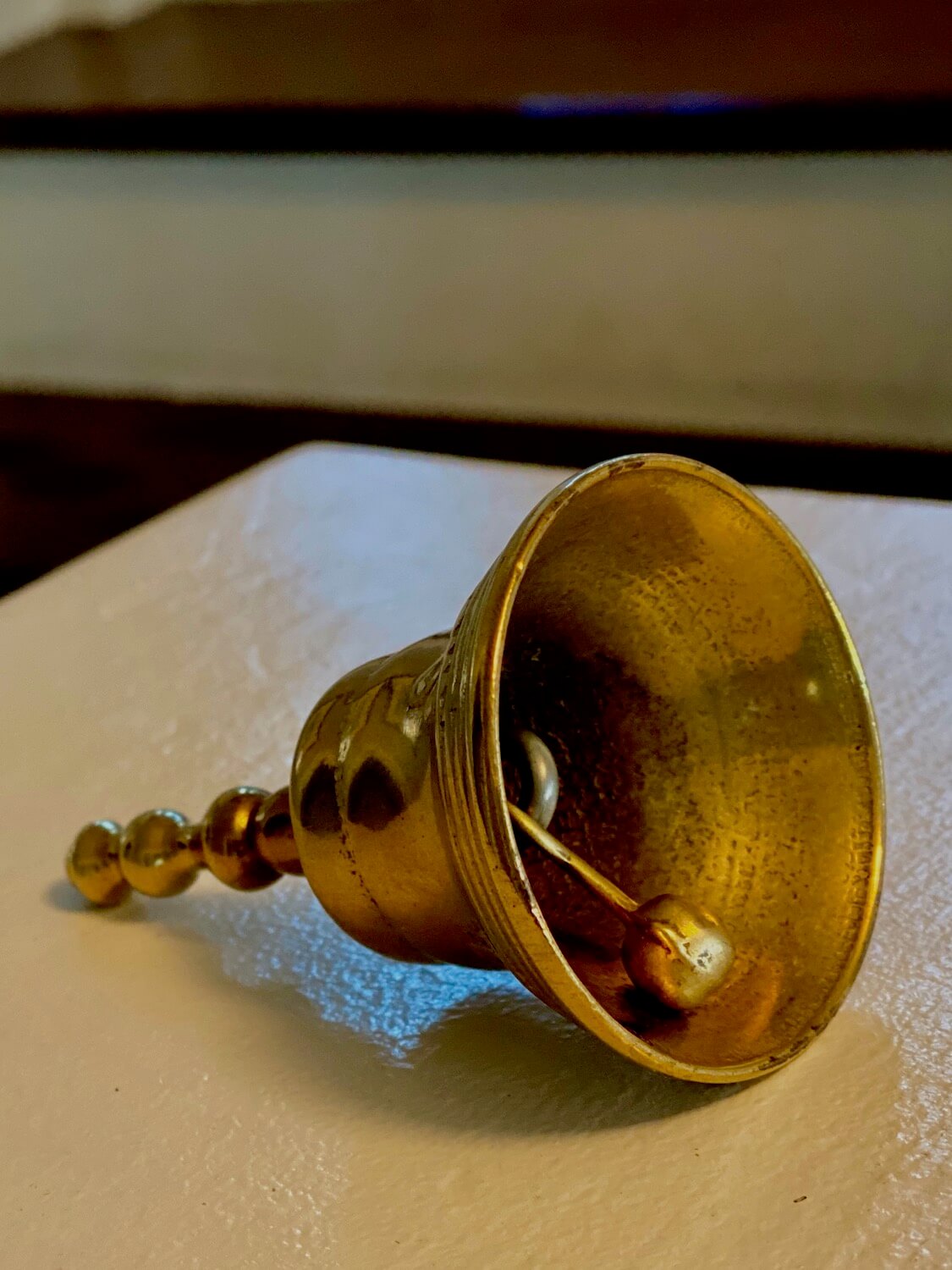
These precious souvenirs represent the soul of my travels around the world — the quirky conversations and kind exchanges of generosity — even if no common language is spoken. A memento can be any material, size, form or cost because what matters is the heart behind the experience. I hope you’ve enjoyed this collection of some of my favorite keepsakes.
Do you have favorite items from travels that have special meaning? Post them on social media with the hashtag #kessiworld.
Follow me on Pinterest and pin a tile below to your board.

